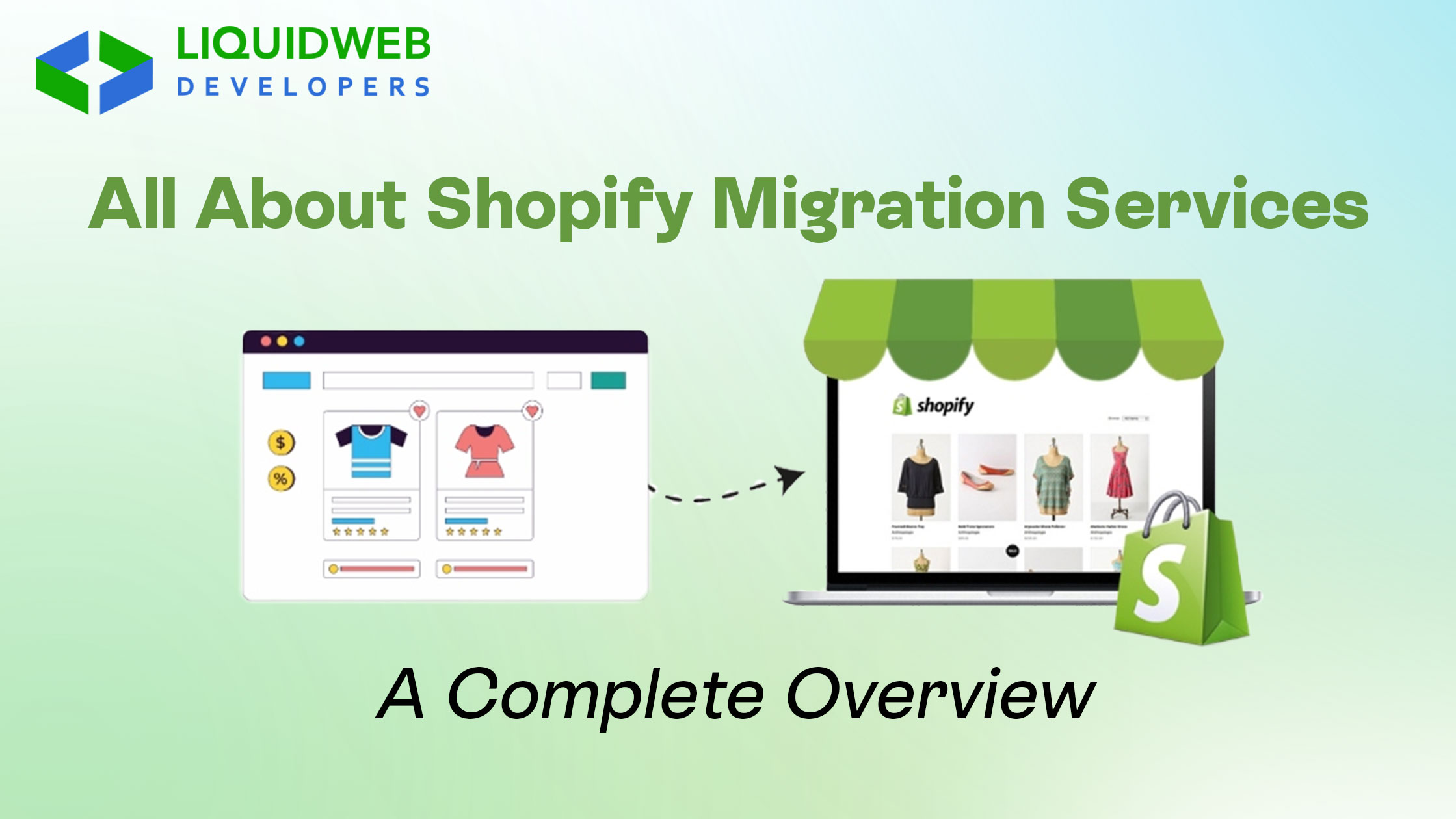All About Shopify Migration Services: A Complete Overview

This is why many online stores are thinking about shifting to Shopify from other e-commerce platforms. If you commenced your e-com store on a specific platform and are actually inquisitive about transferring to Shopify. Undoubtedly, it’s far from a viable and easy process.
Additionally, for this reason, a plethora of Shopify migration services, like the Magento to Shopify migration service, are available. We will walk you through each approach and assist you in selecting the most appropriate one for your store.
Top Reasons to Opt for Shopify Migration Services
Reliability
Businesses must be very careful when choosing a platform that they can fully rely on. Shopify provides a stable option with incredibly effective servers that can handle a large number of queries all at once.
Easy to use
Most people agree that Shopify is the easiest platform to utilize for building and selling online stores. With the assistance of this platform, businesses may also start promoting online without needing any technological know-how.
Merchants may also quickly create their online stores and upload products on the market through the platform via the use of the drag-and-drop editor.
Professional Themes Library
Shopify offers a ton of awesome issues and templates to help you lay out a properly constructed, polished shop in order to entice customers to make purchases. It offers both top-rate and unfastened issues so you can test and learn extra about Shopify.
Multiple Shopify Apps
In addition to accessing the Shopify website for helpful information, the Shopify App Store offers additional features, premium and free themes, and practical apps. Merchants can find thousands of additional premium apps and free themes in this app shop for a variety of uses, including bookkeeping, product sourcing, marketing, and customization.
Additionally, the Shopify Store offers third-party integration apps to aid with your Shopify migration and improve the performance of your online business.
Third-Party Integrations
The platform Shopify is open to connectivity, making integrating 1/3-party integrations inclusive of ERP, CRM, and payment gateways easier.
For stores, this option improves the effectiveness of backend operations. To make your Shopify store better, you could choose from a huge variety of third-party integration gear.
Robust Security
Without a doubt, one of the safest e-trade systems available these days is Shopify. For the shops that can be hosted on it, an SSL certificate is pre-installed, and updates are frequently carried out to guard against vulnerabilities.
Furthermore, the platform has earned PCI DSS accreditation, giving customers the peace of mind that their online bills are safe.
Once you’re happy collectively together with your new Shopify keep, it’s time to head stay! Your Shopify improvement enterprise will help you in launching your save and ensuring the whole lot is set up correctly.
What Data Can You Import in Shopify Migration?
With Shopify, you can create and maintain your online store by migrating different kinds of data. It’s a very flexible e-commerce platform. The primary data kinds that you can import into Shopify are as follows:
User Data
Names, email addresses, shipping and billing addresses, order histories, and any other customer data you wish to transfer are all included in this.
Product Details
Names, descriptions, pricing, photos, variations (such as sizes or colors), inventory levels, and SKU (stock-keeping unit) numbers are just a few of the details about your products that can be moved.
Data by Category and Collection
It is possible to move data on the classification and arrangement of your products. This keeps your online store’s structure intact.
Order Details
Order numbers, products ordered, quantities, prices, order dates, delivery options, and order statuses are just a few of the pieces of information you can import on previous orders.
Content Data
Content from your website, along with articles, weblog entries, and other informative content, can be transferred out of your gift platform.
Images/Documents
It is possible to move any snapshots, movies, or different media files related to your products or website content.
Settings for Payment and Shipping
To make sure your store runs properly, migration can also include shipping options, tax configurations, and payment gateway settings.
Search Engine Information
To guarantee that your SEO efforts are maintained, you can migrate metadata like meta titles, meta descriptions, and URL structures.
App integration data
You might be able to move some app-related data or settings, depending on how well third-party apps and integrations work together.
Reviews and ratings from customers
To preserve social proof and authenticity, you can transfer any customer reviews and ratings that are currently on your existing platform.
Migrate Your Store to Shopify with Shopify Migration Experts
Hiring specialists may be a top-notch desire in case you’re considering moving to Shopify and want to ensure the transfer is going easily and painlessly.
Locate a reputable service company.
Investigate and choose a trustworthy Shopify development agency in the USA.
first. Seek out suppliers who have a track record of successful migrations, a wealth of experience, and favorable evaluations.
Talk about our requirements.
Once you’ve diagnosed a likely carrier provider, get in contact with them to head over your unique desires and specs. Make certain you provide them with all of the information they want to know about your current website online, including the platform you’re transferring from, the quantity of information you need to transport, and any specific capabilities or layout factors you choose.
Details of the current website
Which platform is your website currently built on?
How big is your website, taking into account the quantity of goods, clients, and orders?
Does your new Shopify store need to mimic any unique features or design aspects that you have?
Data Transfer
What information must be transferred to Shopify? This could contain details about the products, clientele, past orders, and more.
What kind of data organization do you want in your new Shopify store?
Do you wish to keep your present customer base and product categories, for instance?
Style and Capabilities
Does your new Shopify save need to stick to any unique layout specifications? Five times of websites you experience touring as well as any emblem rules that must be adhered to. Do you require any particular features for your business, such as unique checkout procedures, alternatives for customizing products, or interactions with external tools?
Obtain a Price and Schedule
After that, you will receive a quote and a migration timetable from the migration service provider. This will help you to get a clear idea of the expenses and time required for the process.
Get Your Data Ready
The first step in the migration process is to get your information ready for migration. In other phrases, this will entail keeping your order records, client statistics, and product catalog organized. Throughout this procedure, your service provider will walk you through what information they require from you.
Initiate the Process of Migration
When all is prepared, the process of migrating will start. The migration will be handled by professionals in every way, from moving your data to launching your new Shopify store. They will also guarantee that the layout and appearance of your store are in keeping with your brand.
Testing
It’s essential to considerably check your new Shopify save while the migration is completed to make sure the whole thing is working as it needs to. This involves reviewing your order records, patron statistics, product catalog, and any unique features or layout components.
Usually, your service provider will conduct this testing and make any required corrections.
Launch Now
It’s time to launch your new Shopify shop after you’re satisfied with it! Your provider of migration services will assist you in launching your store and make sure everything is configured nicely.
In summary
We anticipate that you have intensive expertise in Shopify migration. Following the above-defined steps will assist in guaranteeing a brief, mistake-free ride. The intricacy of the Shopify migration services differs in line with the size of your shop, which in turn affects which method is first-rate for your specific condition. Weighing the hazards of both manual transfer and third-party software is crucial, though.
